|
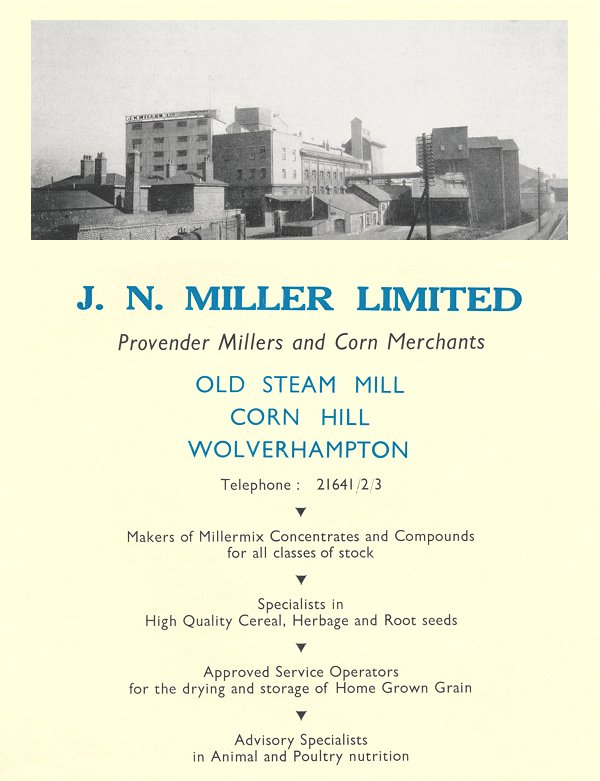
An advert from 1965. |
|
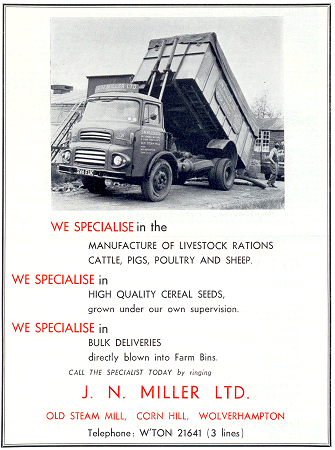
An advert from 1970. |
In the early 1950s the company was listed as
manufacturers of national, wholemeal and
self-raising flour. Packed in 3lb., 6lb, and 12lb.
bags for the home. Also manufacturers of animal
feeding stuffs of the highest quality. Suppliers of
all classes of cereal seeds and fertilisers. Buyers
of home-grown wheat, oats, and barley direct from
the farm.
In 1959 Millers ceased to mill
flour, concentrating solely on animal feedstuffs.
The company then advertised the inclusion of a
department for the growing and cleaning of cereal
seeds, and the ability to collect and deliver all
kinds of feeding stuffs and seeds from farms in
bulk.
|
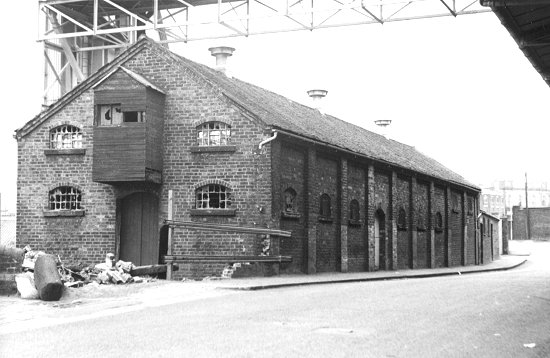
The sack warehouse in the mid 1970s.
Courtesy of David Clare.
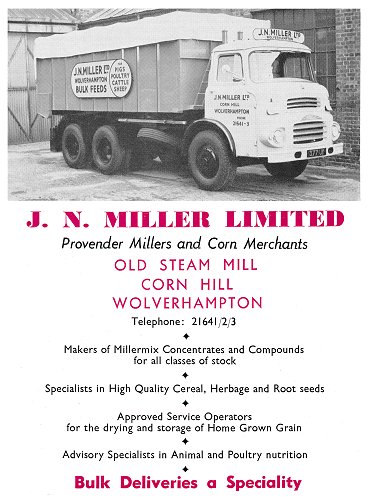
An advert from 1968.
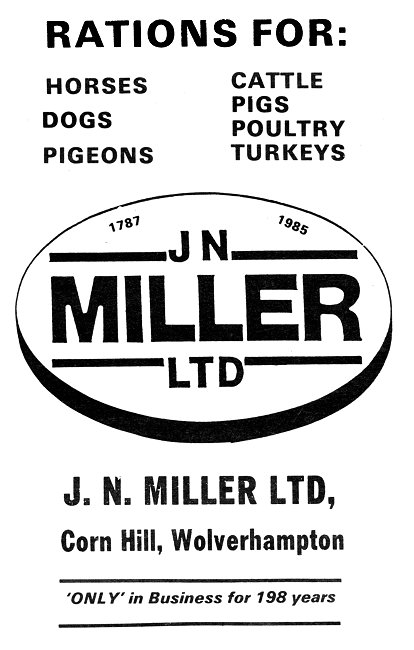
An advert from 1985.
| The mill closed in 1990 and has remained empty
ever since.
In 2004 plans were made to convert the mill
buildings into 49 apartments, but since that date
nothing has happened. |
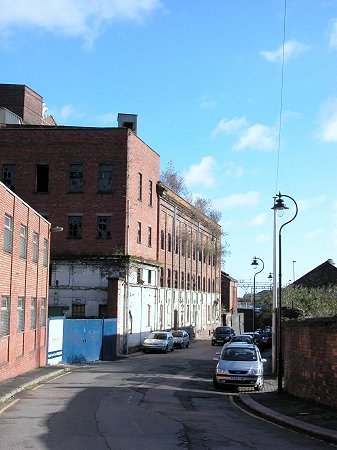
A view from 2003. |
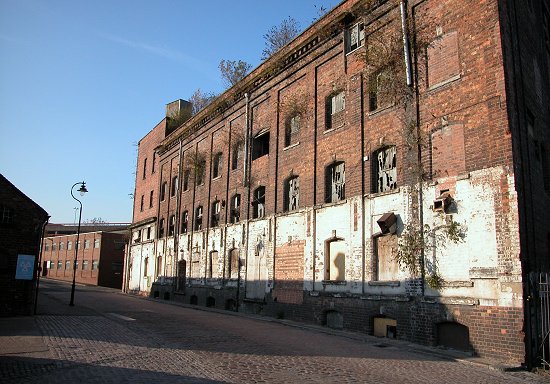
Another view from 2003.
| Sadly the buildings have been the victim of two
arson attacks that have put their future in some
doubt. Unfortunately the buildings were not properly
secured, and so anyone could gain access. In March
2007 the sack warehouse was badly damaged by fire,
which gutted the inside, and took much of the roof.
Since that time the windows and doors have been
boarded-up, and a gaping hole has been left in the
roof. |
 |
The scene in 2007 a few
days after the first fire.
The last of the barriers on
the left has been partly torn down, so that anyone
could gain access to the building. |
| A view in the opposite
direction, also taken in 2007. |
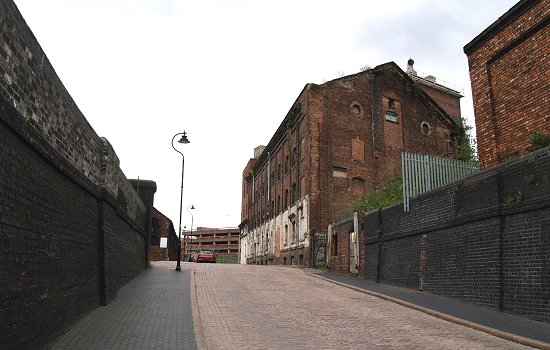 |
 |
The fire-ravaged sack
warehouse, a few days after the fire. |
| A closer view of the
damaged building.
As you can see, no
immediate attempt was made to secure the building. |
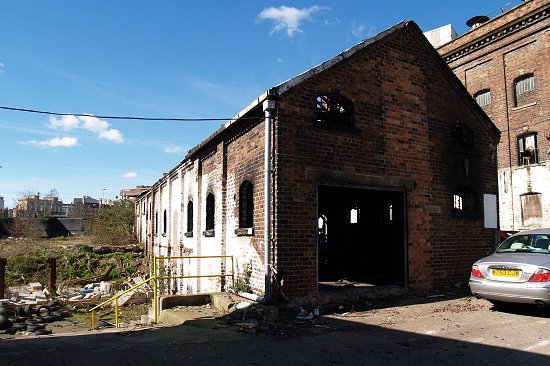 |
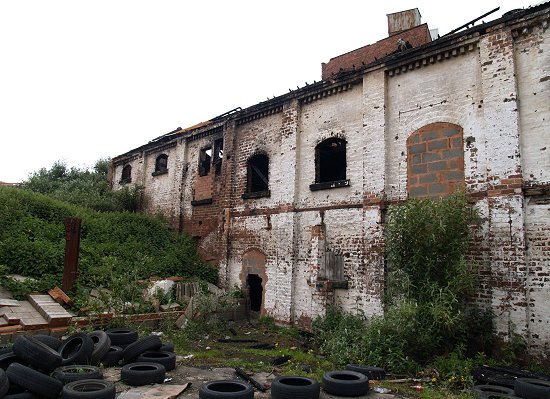 |
The southern side of the
sack warehouse. A
victim of fly tipping. |
| The view through the open
doorway showing what remained after the fire. |
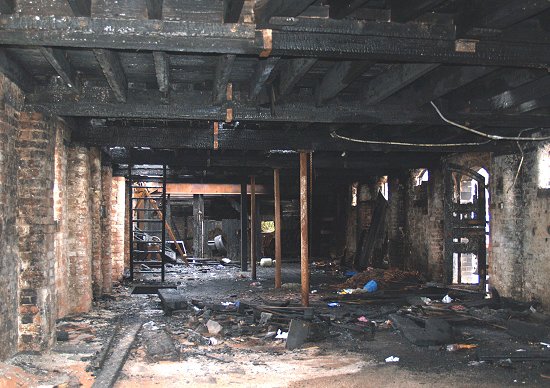 |
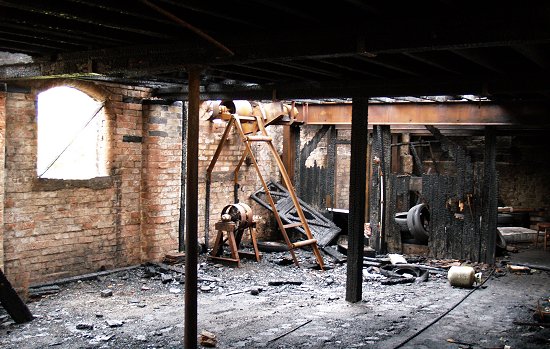 |
The view through the
open side door showing the charred interior. |
| A second and more serious fire, that has put the
future of both buildings in jeopardy, happened in
August 2008 when much of the old mill was destroyed.
The Grade 2 listed building was badly damaged,
much of the roof has gone, and the interior at the
eastern end has been reduced to a mass of twisted
metal.
The exterior walls still stand, but are now
supported by scaffolding.
Since the fire, Corn Hill has been closed to
through traffic. |

The view through an open
window in the corn mill showing the serious damage that was done to
the superstructure during the fire. |
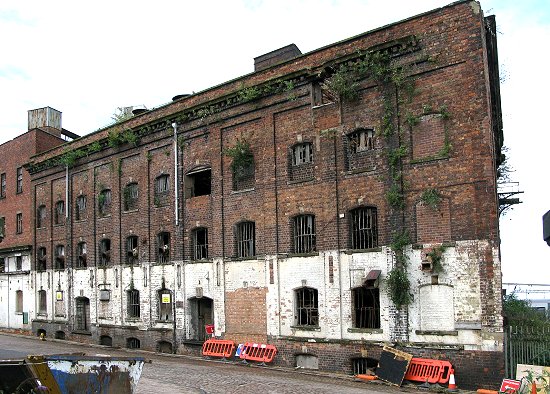 |
The scene a few days after
the tragic fire.
As with the sack warehouse, no
immediate attempt had
been made to secure the building. |
| The view
through the open doorway showing the blackened
remains of the ground floor.
Although a fireproof design,
the photograph shows a lot of timber, which is
presumably why the damage was so great. |
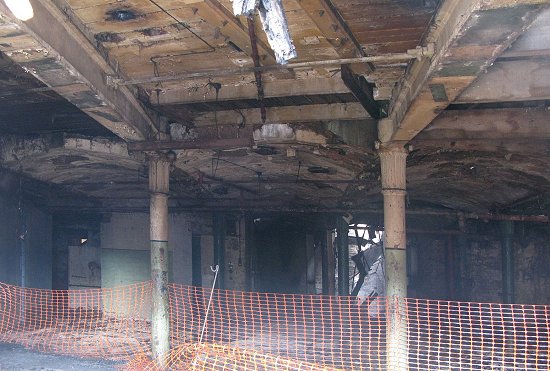 |
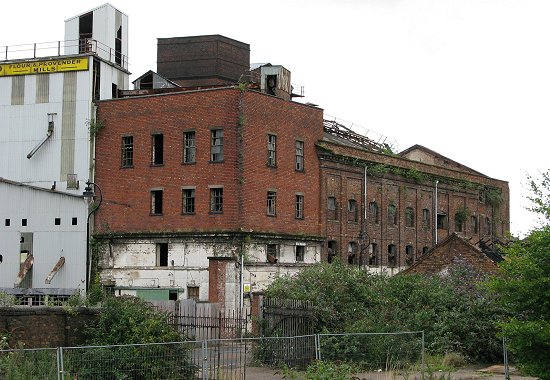 |
Another view from the same
time showing the damage to the roof. |
| A final view from 2008. |
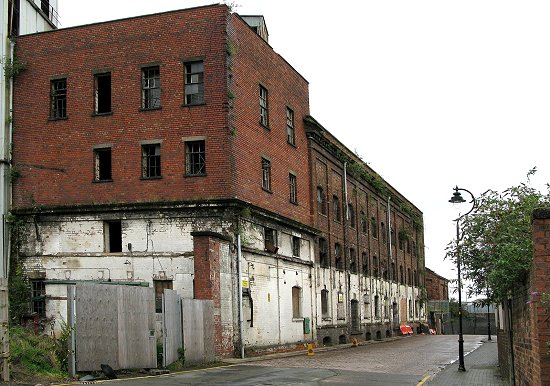 |
 |
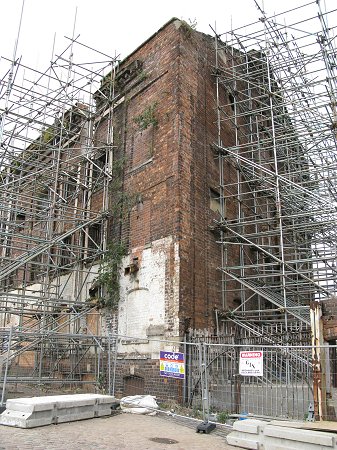 |
|
The eastern
part of the building was covered in scaffolding,
and looked in a very sorry state. |
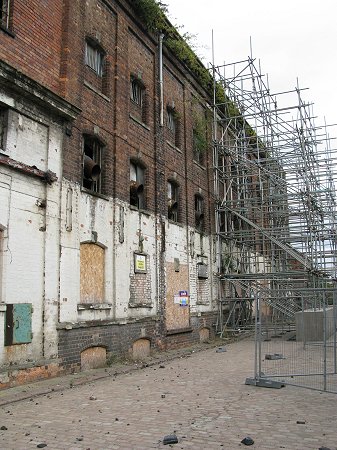 |
Another view of the
scaffolding. |
| A final view from Corn
Hill taken in October 2009. |
 |
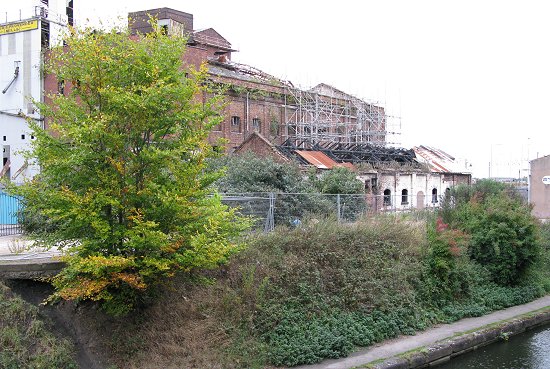 |
The view from across the
canal showing the serious state of both buildings. |
| A final view from across
the canal, taken in October 2009. |
 |
|
It seems that any empty building is
at risk from such an infantile attack. During the last
decade, Wolverhampton and the West Midlands have
suffered from several similar attacks that have reduced
some of our important historical buildings to a pile of
rubble.
Sadly, too few people respect our
heritage. Although the building was in a poor condition,
the decision was taken to clear the site. Demolition
began in October 2015, and one of our historically
significant buildings disappeared forever. If the will
had been there, it could have ended very differently.
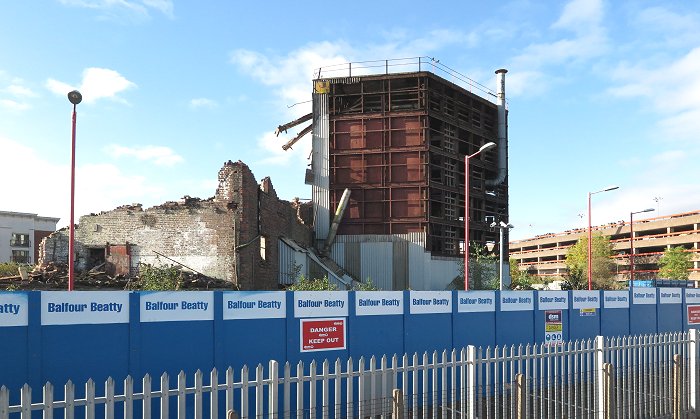
The partly demolished building,
seen from the railway station in October 2015.
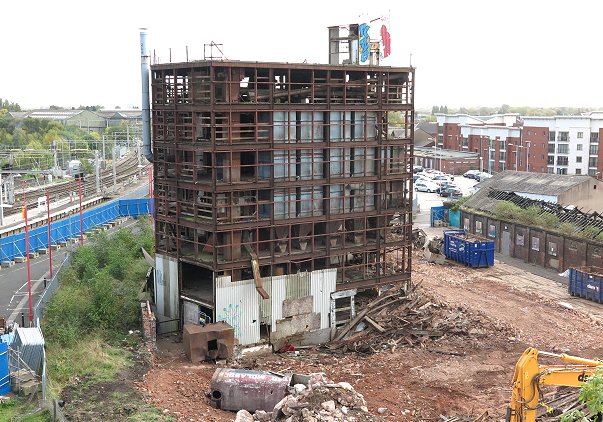
A view from the top of the
multi-storey car park.
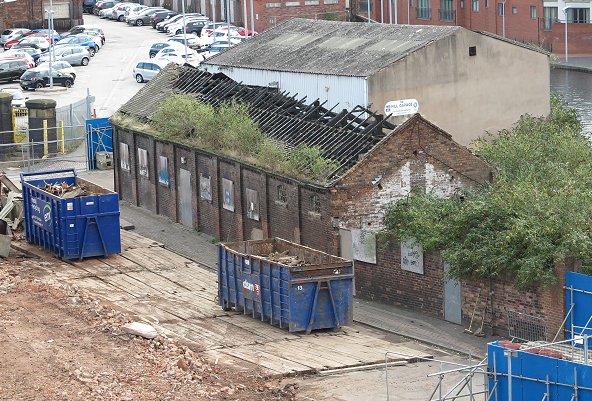
The sack warehouse awaits its fate.
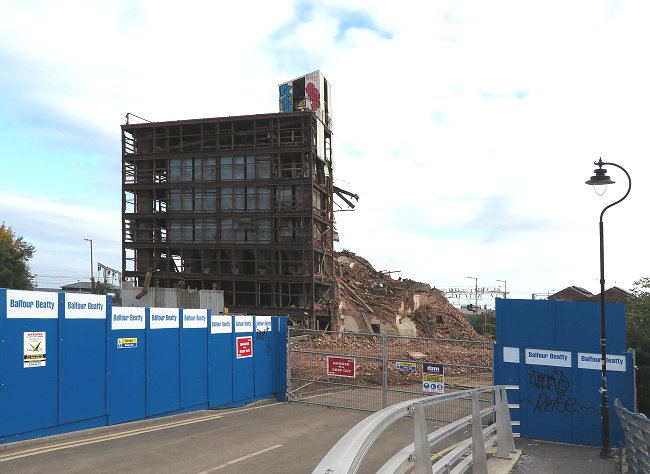
A sad end to a building that was
let down by planners and bureaucrats. |
 |
|
 |
Return to
The 1950s |
|
Return to
the beginning |
|